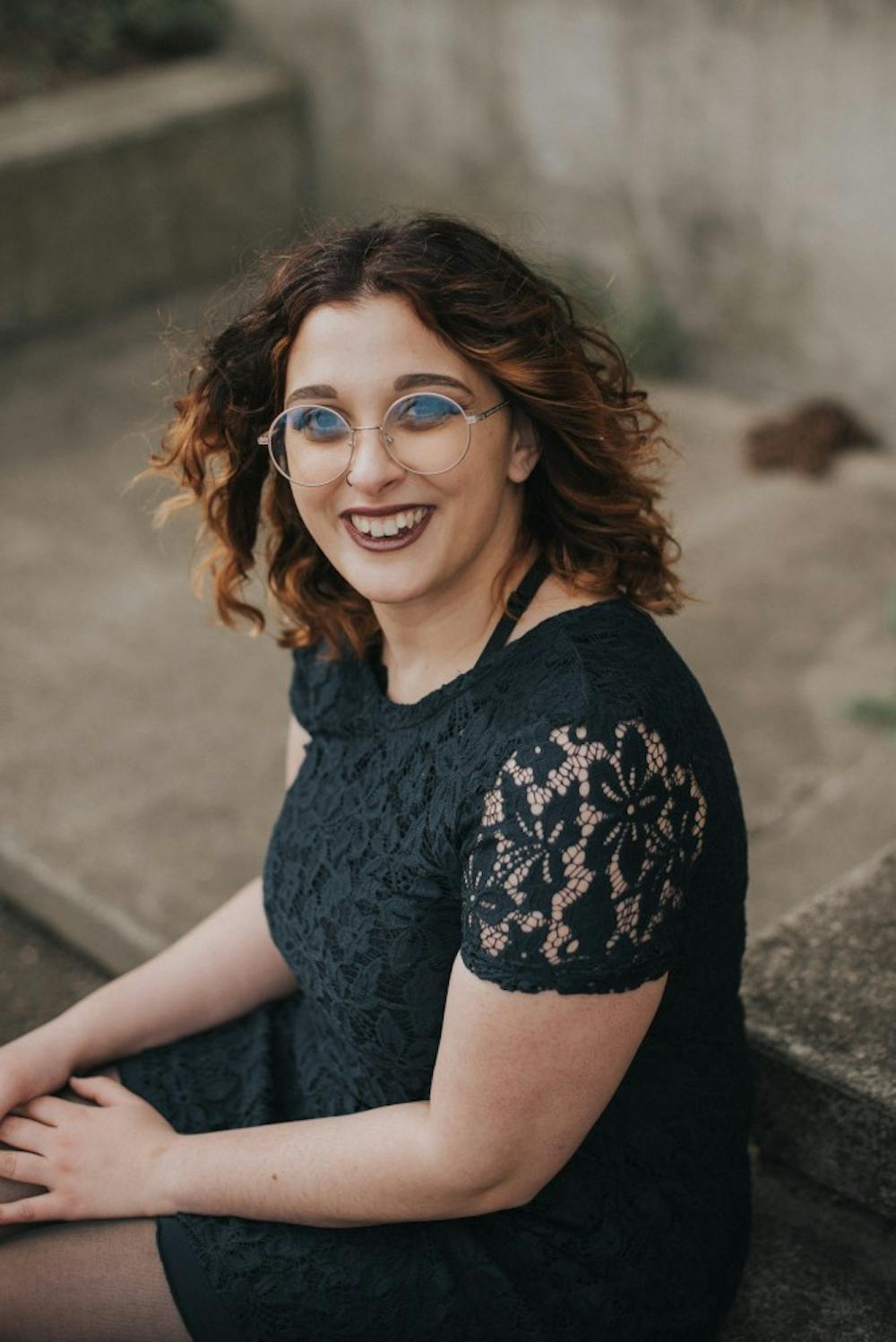Ball State alumna Natasha Chopra has her hands full as he co-founder and visual art editor of Turnpike Magazine, the author of a self-published poetry chapbook and a graduate student at the Herron School of Art + Design.
While her competing roles may seem unrelated to an outsider, to anyone that knows Chopra, they are all a part of her personal mission to create healing and community through creative expression.
Creative Beginnings
Chopra said she has been an artist since she was 6 years old and a poet since she was 10.
She remembers her mom giving her different art supplies to experiment with, which helped progress her art, and she remembers developing an interest in writing after her teacher recommended she submit a poem to an anthology for young voices.
While art was always important to Chopra, it didn’t factor into her career path until she discovered art therapy her junior year of high school. Art therapy differs from traditional therapy because it focuses on offering patients an alternative creative medium, such as drawing, painting or writing, through which they can process difficult emotions.
“I found art therapy as a way to combine my love for art and my love of helping people,” Chopra said.
Chopra was already planning to pursue a career in therapy because of a personal experience with its healing power in high school.
“[Therapy] was a very pivotal moment in my life,” Chopra said. “I hope to have that same impact on people in the future.”
Post-Grad Poetry
After obtaining her bachelor’s degree in psychology from Ball State in May 2018, Chopra moved to Indianapolis with her partner, Matthew Scott Swain, to set up their new lives as graduate students at Indiana University-Purdue University Indianapolis (IUPUI).
Leaving Ball State was a difficult transition for Chopra which prompted her to publish her first original chapbook, “What We Know: Moving On Doesn’t Mean It Didn’t Change Us,” in May 2018.
“It was me saying goodbye to Ball State, goodbye to Muncie and moving on to the next chapter of my life,” Chopra said.
In her collection of poems, she explores themes of identity, race, sexuality, individuality and authenticity. Chopra said the experience of writing poetry has allowed her to understand her clients’ ability to heal through art.
“I believe a lot of writers get that processing feeling when they are creating,” Chopra said. “A lot of my poetry focuses on my identity as a biracial woman and how I’ve been navigating the world.”
Turning to Turnpike
After publishing her chapbook, Chopra felt the urge to do more to help elevate other marginalized voices exploring multiple identities.
She and Swain gave themselves one month to prepare logos, graphics and a website for the official launch of Turnpike Magazine on Aug. 1.
“I think, a lot of the time, marginalized voices can find themselves in the position where they don’t get published unless they air their traumas,” Chopra said. “We wanted to explore emotions that writers may not be able to see in other publications.”
Swain, Turnpike’s poetry editor and co-founder, said Chopra is the driving force behind the magazine.
“A lot of [Chopra’s] artwork and writing focuses on her experiences as a person of color, and we wanted to make a literary space and an art space that broadened the amount of work containing that content and conversation,” Swain said.
Paige N. Price, the prose editor for Turnpike, emphasized the editing team’s passion for giving new creative works a home.
“This is a very small project run by three people,” Price said. “Even though we’re not The New Yorker, we still value and cherish every word and every piece we receive, no matter how big or small the project.”
Turnpike released its first issue in September, with plans to release Issue 2 in early November and Issue 3 in early January. The publication is currently accepting submissions for its third issue in poetry, creative nonfiction, fiction and visual art.
Dedication to Creative Communities
Chopra began her first semester at Herron in September, where she started a practicum that allows her to work with art therapy patients for the first time. While adjusting to therapy work can be emotionally draining, Chopra said she is optimistic about her career path.
Swain said he believes Chopra has found so much success in her creative endeavors because of her immense capacity for empathy.
“She has such a strong emotional and intellectual intelligence,” Swain said. “It’s hard to find people who genuinely want to connect and learn about everyone they meet, but [Chopra] is one of them.”
Price said Chopra is both a great friend and coworker because she is “always bright, smiling and willing to lend a shoulder.”
As the days get shorter and her obligations keep her busier, Chopra said she never seems to lose sight of her hope for the better community she can build through the healing practices of art.
Contact Carli Scalf with comments at crscalf@bsu.edu or on Twitter @carliscalf18.





